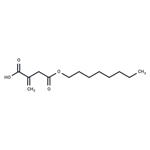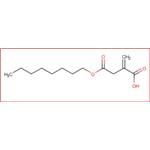4-Octyl Itaconate increases nuclear factor erythroid 2-related factor 2 (Nrf2) protein levels and expression of Nrf2 target genes and enhances LPS-induced Nrf2 stabilization in mouse macrophages. In vivo, 4-octyl itaconate (50 mg/kg) decreases serum levels of IL-1β and TNF-α, increases Nrf2 protein expression, and protects against LPS-induced lethality in wild-type, but not Nrf2 knockout, mice.
4-Octyl itaconate (4-OI) possesses anti-inflammatory effects. It can obstruct glyceraldehyde 3-phosphate dehydrogenase (GAPDH) and glycolysis in macrophages. It can be a good substitute to itaconate due to its thiol reactivity. The electrophilic α and β-unsaturated moieties of 4-OI might help to alkylate the thiol in cysteine residues of proteins through Michael reaction.', 'The endogenous metabolite itaconate has recently emerged as a regulator of macrophage function. 4-Octyl itaconate is a cell-permeable itaconate derivative th at decreases cytokine production and is protective against lipopolysaccharide-induced lethality in vivo. Esterases in mouse myoblast cells and macrophages hydrolyze it to itaconate, which alkylates cysteine residues on KEAP1, allowing the transcription factor Nrf2 to increase the expression of anti-oxidant and anti-inflammatory downstream genes.



